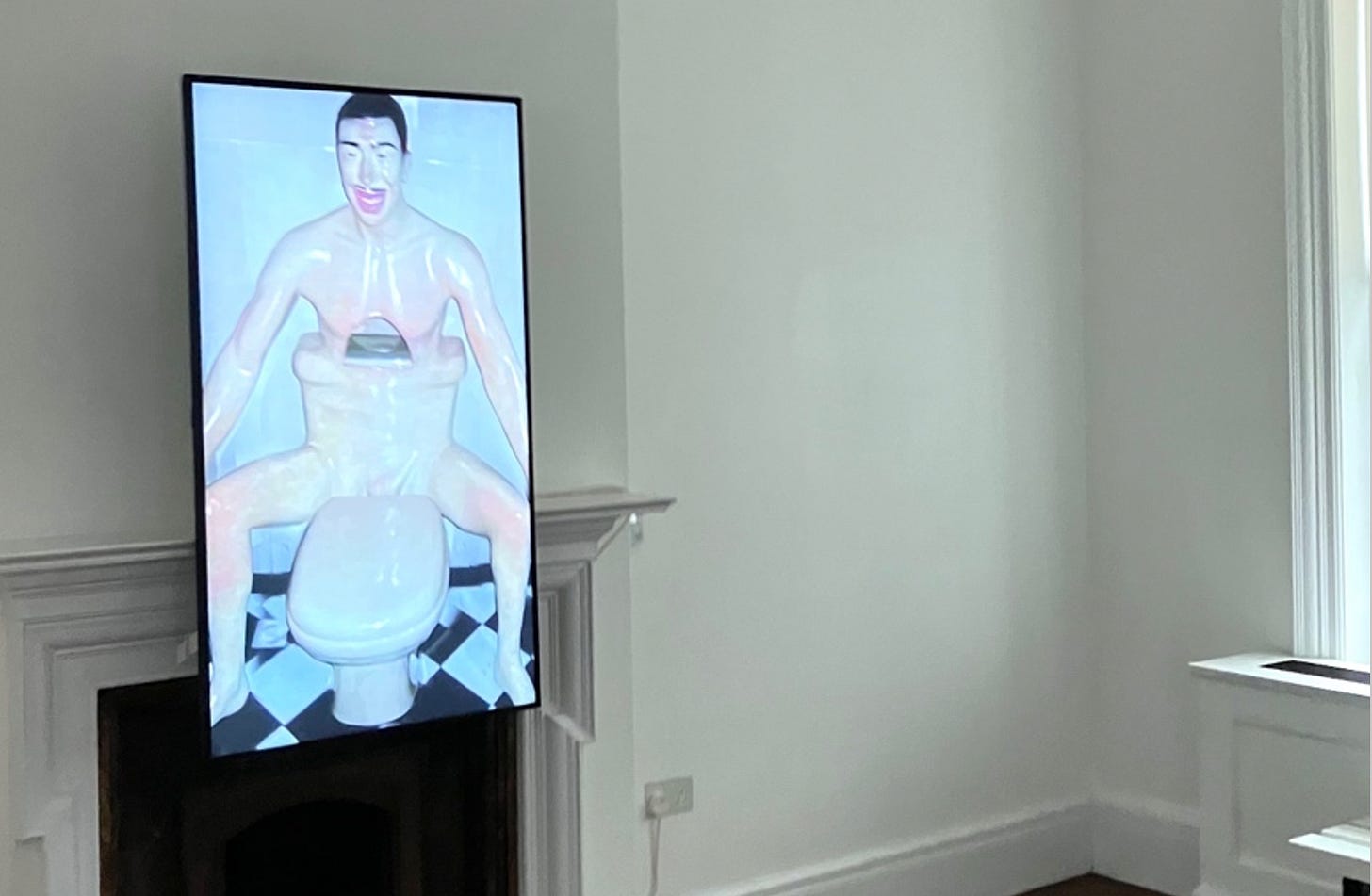First room: a series of digital collages. Snakes coming out of noses, vomit waterfalls, shoe noodles, mayonnaise toothpaste, toenails pulled off with a bottle opener: cursed combinations from an AI nightmare.
Next room: three or four large canvases that look like they have been designed by a machine and made on a conveyor belt, with eerie, computer-generated images behind swirly glazes. Consider these two rooms as a kind of waiting area to get you in the mood for the twenty-one-minute film shown on a loop at the centre of Jon Rafman’s exhibition: Punctured Sky.
Unusually for films in galleries, Punctured Sky tells a story. Narrated in the first person, it follows a man’s search for a videogame that he remembers playing as a teenager, of which he cannot now find a single trace, try as he might. There is only one other person who remembers it, his unfortunate, pig-nosed childhood friend, Joey Bernstein.
The disjunction between their memories and the world around them is echoed in the friction between the film’s outlandish surrealism on the one hand and the bored monotone of the narrator’s voice on the other. The graphics are uncanny, a mashup of photography and CGI, and the world is full of flamboyantly dressed human-animal hybrids, but everything is taken for granted and life for the narrator seems profoundly dull, a techno-dystopia.
At one point, the narrator has a rendezvous in the multiplayer space of the game Grand Theft Auto V. The film transitions seamlessly into the graphics of the game-within-a-film, giving both settings equal importance as modes of reality. From our point of view, there is little differentiation between the space of the game and the space of the world in which the narrator otherwise lives his life.
This mise-en-abyme of interpenetrating realities is fundamental to the story. The narrator asks: did I really play Punctured Sky? Was it all in my head? Why can Bernstein remember it, but no-one else? Has it been erased from the record? Am I going mad? This is a compelling dramatisation of the way that we live in multiple registers, corporeal and electronic, and the sensation of digital claustrophobia that the latter can produce. It is a reminder of how the uncanny resonances and misrememberings that the internet produces nourish conspiracy theories and paranoia.
On another floor of Sprüth Magers is a sequence of similar but shorter films that also explore strange and delusional experiences of reality, narrated in first-person monologues. In one, Benny Benjamin describes his odd experiences with a hypnotist. Another is told by a passionate young Somalian pirate who wakes up to find himself in the body of a middle-aged married white man from west Texas. There is the superfan who believes he has taken on the identity of his dead TV hero, Jonathan Brandis. At turns bleak, grotesque, hilarious and absurd, they bristle with intrigue and are all worth watching.




